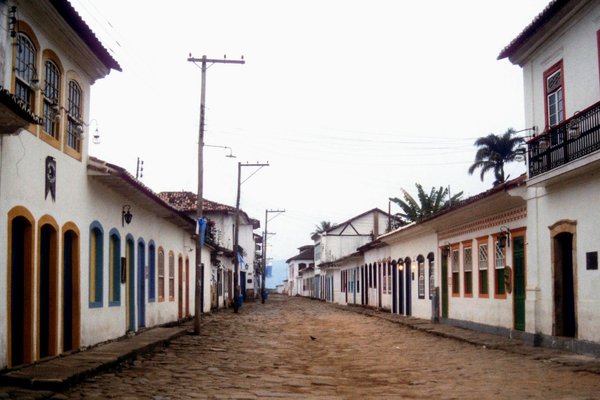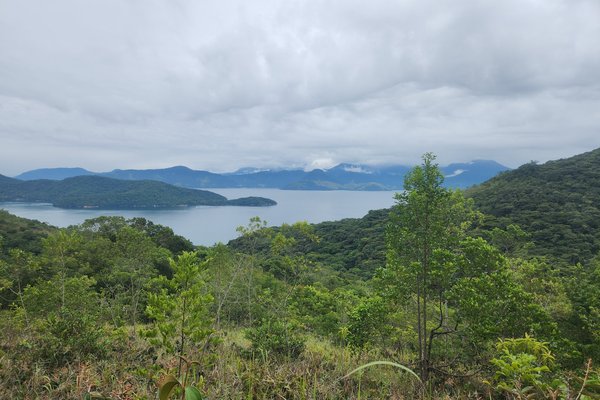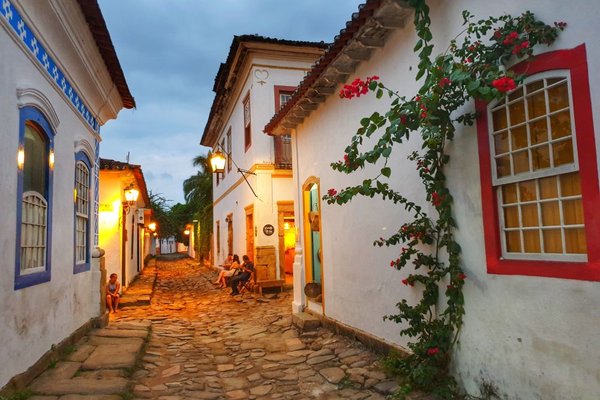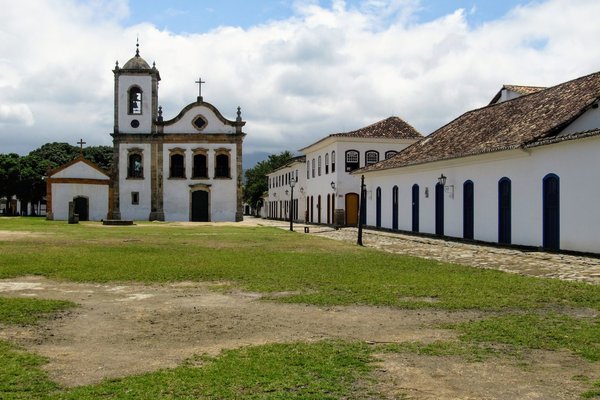Brazil
Paraty and Ilha Grande
Paraty and Ilha Grande – Culture and Biodiversity is a forested coastal area that was the scene of early encounters between Europeans and natives.
The area contains cultural assets that testify to the occupation of the area by indigenous inhabitants and, from the 16th century onwards, by European settlers and enslaved Africans. Most of the landscape is covered by Atlantic rainforest of great biological diversity and with a high number of endemics. The area has 450 species of birds and 150 mammal species, of which the Southern Muriqui is the flagship species.
Community Perspective: the picturesque colonial town of Paraty is the main attraction here. Merging it into a cultural landscape ánd a mixed site with some more Atlantic Forest seems perhaps to have been ‘unwise’ – more about that in Solivagant’s review.
Site Info
Official Information
- Full Name
- Paraty and Ilha Grande – Culture and Biodiversity (ID: 1308)
- Country
- Brazil
- Status
-
Inscribed 2019
Site history
History of Paraty and Ilha Grande
- 2019: Inscribed
- Inscribed
- 2019: Name change
- Upon inscription, from "Paraty Culture and Biodiversity" to "Paraty and Ilha Grande – Culture and Biodiversity"
- 2018: Incomplete - not examined
- 2016: Incomplete - not examined
- As 'Paraty - Culture and Biodiversity'
- 2013: Incomplete - not examined
- 2012: Incomplete - not examined
- 2009: Deferred
- "to revise its dimension and denomination as a mixed property" (WHC-09)
- Type
- Mixed
- Criteria
- v
- x
Links
- UNESCO
- whc.unesco.org
- Related
-
- paraty.com.br — Privately-owned website, but quite comprehensive
All Links
UNESCO.org
- whc.unesco.org — whc.unesco.org/
Related Resources
- paraty.com.br — Privately-owned website, but quite comprehensive
Community Information
- Community Category
- Natural landscape: Forest
- Cultural Landscape: Continuing
Travel Information
Rio de Janeiro Hotspot
Recent Connections
-
Tapirs
South American (Lowland) Tapir. Picture…
-
Incomplete more than once
2012, 2013, 2016, 2018
-
Rio de Janeiro Hotspot
Ilha Grande is accessible from Rio via …
Connections of Paraty and Ilha Grande
- Geography
-
-
Atlantic Ocean
-
Atlantic Forest
"This section of the Atlantic Forest represents the greatest richness of endemism for vascular plants within the hotspot with some 36 species of rare plants, 29 of which are endemic to the site." (OUV)
-
- Trivia
- Ecology
-
-
Tapirs
South American (Lowland) Tapir. Pictured in the nomination file and present in Serra da Bocaina NP.
-
Jaguar habitat
-
Rainforests
"The property and its buffer zone present a natural amphitheatre of Atlantic Rainforest dropping down to Ilha Grande Bay" (OUV) -
Endemic Bird Species
Two Endemic Bird Areas are also found here, supporting 124 endemic bird species (57% of the total endemic bird species within the hotspot). -
Over 100 mammal species
150 species of mammals are found within the property (OUV crit X)
-
- Architecture
-
-
Baroque
There are four important historic baroque churches in Paraty (wiki)
-
- Damaged
-
-
Threatened by Oil and Gas Exploration
"reservoirs located along the marine sedimentary basins, .., in waters between 2,000 and 3,000 meters deep and at distances ranging from 50 to 450 km from the coast. In their central part, the projects are located in front of the states of São Paulo and Rio de Janeiro. Possible environmental impacts such as oil leaks, beach contamination, introduction of exotic invasive organisms and others, are related to the activities of the production pilots." (IUCN Outlook 2020)
-
- World Heritage Process
-
-
Mixed and Serial
-
Incomplete more than once
2012, 2013, 2016, 2018
-
Mixed and Cultural Landscape
Continuing CL
-
- Human Activity
-
-
Gold production
It was the terminus point of the Caminho do Ouro (Gold Route), along which gold from Minas Gerais was brought to Paraty for shipping to Europe (AB ev) -
Sea Ports
archaeological complex of Paraty-Mirim, which played an important role in the 17th century as a port for the exchange and trade of goods and slaves.(AB ev) -
Slavery
Igreja do nossa senhora do rosario e Sao Benedito - The church was built and used by Paraty’s African slaves.
-
- Constructions
-
-
Prison
Instituto Penal Cândido Mendes
-
- WHS on Other Lists
-
-
Alliance for Zero Extinction
Ilha Grande -
Biodiversity hotspot
Atlantic Forest biodiversity hotspot -
Creative Cities
GastronomySee www.unesco.org
-
Plant WHS not in a CPD
"This section of the Atlantic Forest represents the greatest richness of endemism for vascular plants within the hotspot with some 36 species of rare plants, 29 of which are endemic to the site." (OUV), "The flora of Ilha Grande contains 1143 plant species, including 25 that are under threat" (see link)See www.scielo.br
-
WWF Global 200
Terrestrial, Tropical and Subtropical Moist Broadleaf Forests: (48) Atlantic Forests (subregion Serra do Mar coastal forests)
-
- Timeline
-
-
Built in the 17th century
Paraty became the most important export route of the newly discovered gold at the end of the 17th century and served as a gateway for the entry of tools, as well as enslaved Africans to work in the mines (AB ev) -
Paleocene
-
- WHS Hotspots
-
-
Rio de Janeiro Hotspot
Ilha Grande is accessible from Rio via bus and ferry several times a day (~3 hours, 50 minutes each way)
-
News
No news.
Recent Visitors
Visitors of Paraty and Ilha Grande
- Alberto Rodriguez Gutierrez
- Alejandro Lau
- Alexander Barabanov
- Alex Marcean
- Aljaz
- Alvaro1404
- Ammon Watkins
- Andrew0181
- Angela Vandyck
- Aspasia
- Atila Ege
- Bill Maurmann
- Carlo Sarion
- Carlos Sotelo
- Christoph
- Christravelblog
- Cirene Moraes
- Crinion
- Csaba Nováczky
- Deffra
- Delphine Delaunay
- Doubanjiang
- edstar500
- Elf21
- Els Slots
- emvcaest
- Erfe91
- Erik Jelinek
- Eva Kisgyorgy
- Fan Yibo
- fedemarch92
- Felicité
- Frédéric M
- giloudepuertorico
- Gjert
- Harald T.
- hotpickle
- IreneKD
- Jarek Pokrzywnicki
- Javier
- João Aender
- Joel on the Road
- Jon Opol
- Karito Vies
- Kevin247
- Kurt Lauer
- Lameduck99
- Liamps91
- Linz
- Little Lauren Travels
- Loic Pedras
- Lucio
- Luis Filipe Gaspar
- Lukasz Palczewski
- Maciej Gil
- manuel011197
- Matthewsharris
- Michael Ayers
- Michael Turtle
- MMM
- Nihal Ege
- Patrik
- Paul Schofield
- Philipp Peterer
- Pieter Dijkshoorn
- Pink Bunny
- Roman Bruehwiler
- Sclowitz
- Shandos Cleaver
- Shombob
- sibariam
- Solivagant
- Stanislaw Warwas
- stephanvermeulen
- Thomas Buechler
- Thomas van der Walt
- Van Hung
- Vernon Prieto
- Walter
- Wojciech Fedoruk
- Xiquinho Silva
- zfish
- Zoë Sheng
Community Reviews
Show full reviews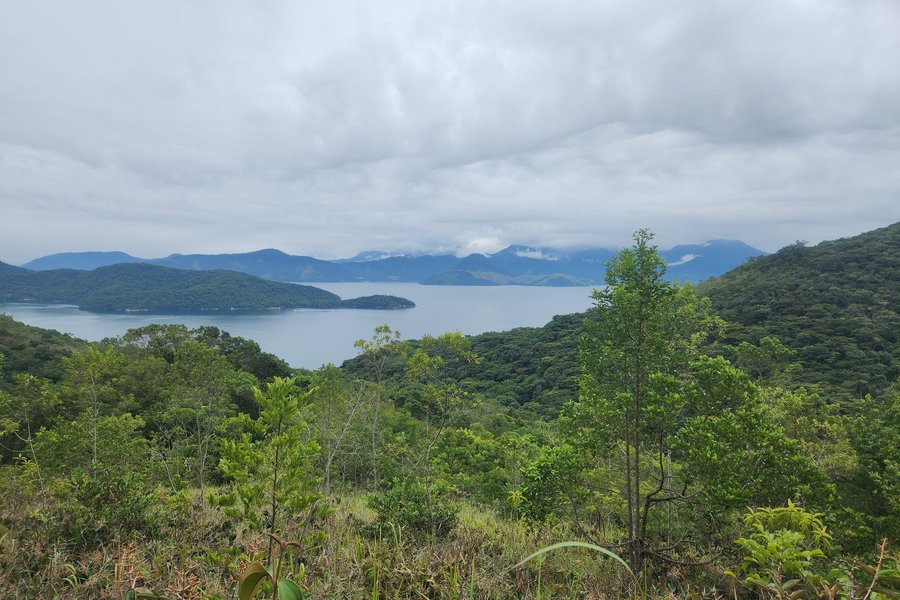
I visited Paraty and Ilha Grande in March 2024, en route between Rio de Janeiro and São Paulo. The Costa Verde bus first took me from Rio to Conceição de Jacareí. From there, numerous excursion boats and water taxis leave for Ilha Grande at a frequency and schedule that eluded me. I had to wait just over an hour and a half for mine to fill up and we finally set sail for a short 15-minute crossing. I got off at Abraão, where I spent the night. As the weather was grey and gloomy, I gave up the beach visits and snorkelling excursions in favour of hiking. From the western end of the beach, a path leads to the Cachoeira da Feiticeira waterfall. This path enters the Parque Estadual da Ilha Grande and thus the core zone of the WHS, as the island's tourist village is not itself part of it. As well as the pretty waterfall, the trail takes in a few viewpoints, some fine beaches and the photogenic ruins of an aqueduct. Keep your eyes peeled for the magnificent swallow-tailed manakin, but also watch where you step, as the path is loamy and very slippery. I spent the rest of my afternoon on the island walking on the beach and drinking caipirinhas in the shade of the palm trees.
The next day, I took the public ferry (which is much cheaper, but also less frequent) to Angra dos Reis (an 80-minute crossing). From there, I was able to …
Keep reading 0 comments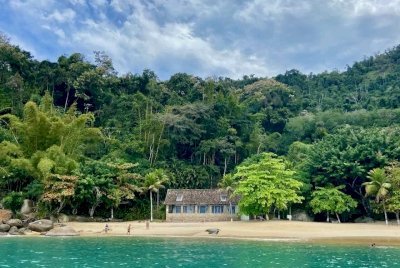
There's a lot of options for how to visit the Paraty WHS, which is not surprising considering it is a Mixed site and consists of a number of different locations, including the offshore island of Ilha Grande.
Like previous visitors, our main base for our visit was the town of Paraty. We stayed for three nights just outside the historic centre in one of the many guesthouses. The town is a popular getaway spot for the nearby cities of Rio and Sao Paulo. The weekend after we visited, despite being late winter, nearly everything was booked out for a cachaca festival.
We found the historic centre charming, although there's not that much to see other than cafes and souvenir shops (although some had great local handmade handicrafts). Two of the most interesting spots were the Casa da Cultura (with a variety of exhibits, and a few details of the WHS listing) and the Church of Sacred Art at Igreja de Santa Rita, both with free entry. It's easy to cover this part of the site in a couple of hours.
The next location in the listing is the Morro da Vila Velha, on the northern side of the town, containing the Forte Defensor Perpetuo. It's a short stroll along a path from near the end of Alameda Princessa Isabel, although the fort and its museum was closing for siesta just as we arrived, so I'm not sure how interesting it is. There's not much to see outside. …
Keep reading 0 comments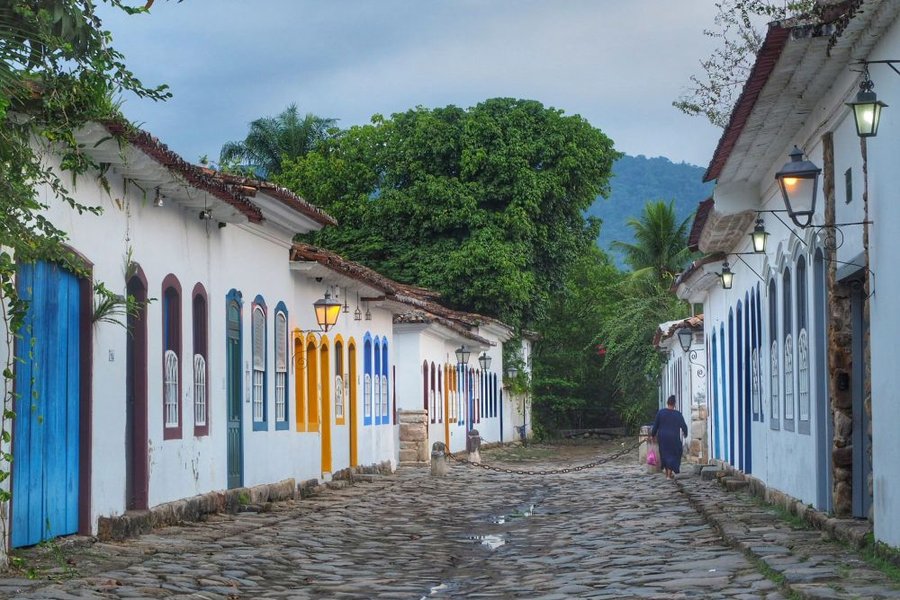
Just visited the site (March 2013). Unesco status or not it is certainly one of those places in Brazil that you just have to see anyway. Paraty is easly located between Rio (4 hours by bus) and Sao Paulo (6 hours by bus) with some frequent buses going both ways.
Historical nucleus of the town is almost intact. Its cobblestone streets and white mostly one-storey houses are just like in the towns of XVIII-XIX centuries. Currently a little bit touristic place with majority of houses changed into shops, pousadas still remained its own colonial old-fashioned character. Some streets especially during high tide resemble Venice thanks to flow of sea water into the town. Keep fingers crossed for Paraty's future inscription but who knows ...
Keep reading 0 comments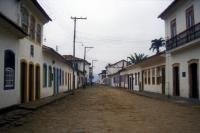
After a flourish of 8 successful inscriptions in 3 years (1999-2001) Brazil hasn’t had a lot of luck recently. In 2003 Rio was rejected/deferred and in 2008 São Cristóvão was deferred - neither, as yet, to reappear. I wonder if its 2009 proposal of Parati (aka Paraty) will fare any better? I hope so – Latin America already has a lot of (too many?) inscribed “colonial” towns but Paraty is a gem. Not perhaps for the excellence of any individual buildings but as an undeveloped and architecturally very harmonious ensemble in a fine coastal setting.
We visited in 1999, driving in down through the Atlantic Coast forests off the plateau of Minas Gerais and then out to Rio along the fine coast road. The town’s history has resulted in almost complete preservation as it was in the 18th century. Originally of great importance for the export of gold from the hinterland on what was then the only route down from the mining towns, its significance declined rapidly with the opening of new routes and new economic imperatives following independence. Its location left it cut off geographically – only accessible by sea or rough track until a road down the escarpment was built in 1954.
Parati is set on a peninsular and cars are not allowed into the central area of around 50 blocks where the streets are still “rough paved”. There may have been some, but I can’t remember any, “development” to spoil the harmony. Empty of cars it may …
Keep reading 0 comments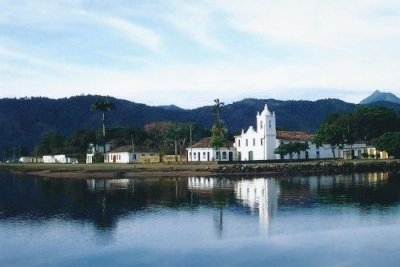
The Brazilian town of Paraty holds the record of having submitted an incomplete dossier: no less than 4 times! But finally, the Brazilians succeeded last year in putting everything together and Paraty will be brought forward as their WH nomination for 2019. Its new title ‘Paraty Culture and Biodiversity’ suggests a very broad approach.
As Gold Route in Parati and its landscape an earlier incarnation of this site was already Deferred in 2009: the main objection at the time was that only a small part of the Gold Route was included. The focus was on the town of Paraty, on which the verdict was “a 19th-century colonial town, although attractive, it is not exceptional and ICOMOS does not consider that Paraty on its own justifies inscription on the World Heritage List”. Possibilities were seen though to include a longer stretch of the Gold Route and/or to extend it to a mixed WHS or a cultural landscape “with high natural values”.
The new nomination called ‘Paraty Culture and Biodiversity’ is a mixed one indeed and a cultural landscape as well. The “Gold Route” has disappeared from the title, so we may assume that the natural setting will become more prominent than the historic route. But let’s be clear: in the end, it’s all about Paraty, a pretty coastal colonial town that is already well on the tourist trail. They might be wanting to attract even more international visitors.
For me, it was an exciting trip just getting to …
Keep reading 0 comments
